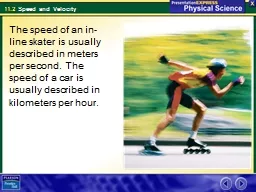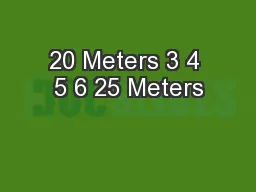PPT-The speed of an in-line skater is usually described in meters per second. The speed of
Author : lois-ondreau | Published Date : 2018-10-20
How are instantaneous speed and average speed different Speed Average speed is computed for the entire duration of a trip includes starts and stops so it slows
Presentation Embed Code
Download Presentation
Download Presentation The PPT/PDF document "The speed of an in-line skater is usuall..." is the property of its rightful owner. Permission is granted to download and print the materials on this website for personal, non-commercial use only, and to display it on your personal computer provided you do not modify the materials and that you retain all copyright notices contained in the materials. By downloading content from our website, you accept the terms of this agreement.
The speed of an in-line skater is usually described in meters per second. The speed of: Transcript
Download Rules Of Document
"The speed of an in-line skater is usually described in meters per second. The speed of"The content belongs to its owner. You may download and print it for personal use, without modification, and keep all copyright notices. By downloading, you agree to these terms.
Related Documents














